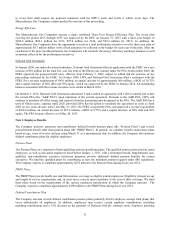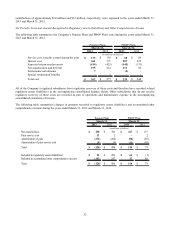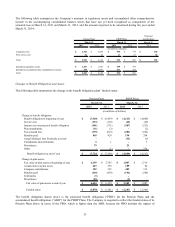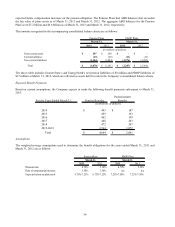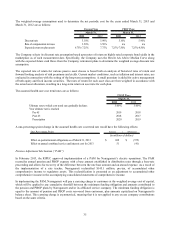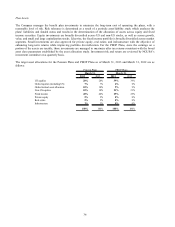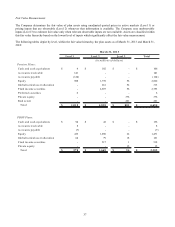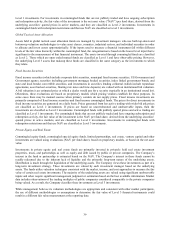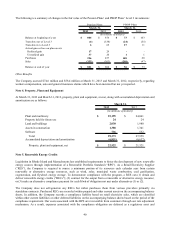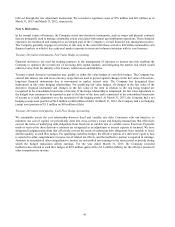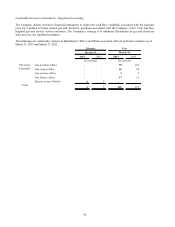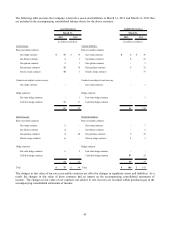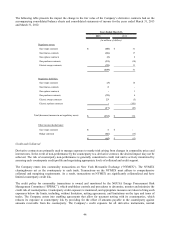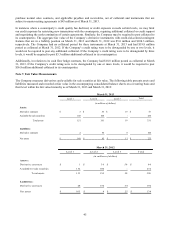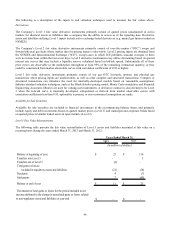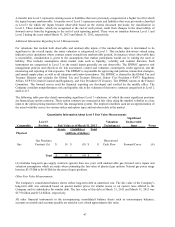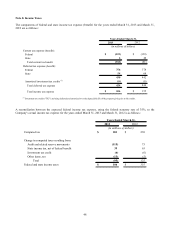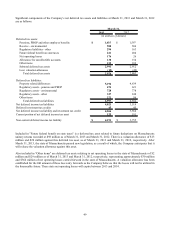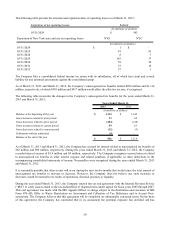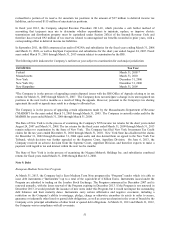National Grid 2013 Annual Report Download - page 42
Download and view the complete annual report
Please find page 42 of the 2013 National Grid annual report below. You can navigate through the pages in the report by either clicking on the pages listed below, or by using the keyword search tool below to find specific information within the annual report.41
relieved through the rate adjustment mechanism. We recorded a regulatory asset of $78 million and $63 million as of
March 31, 2013 and March 31, 2012, respectively.
Note 6. Derivatives
In the normal course of business, the Company enters into derivative instruments, such as swaps and physical contracts
that are principally used to manage commodity prices associated with natural gas distribution operations. These financial
exposures are monitored and managed as an integral part of the Company’ s overall financial risk management policy.
The Company generally engages in activities at risk only to the extent that those activities fall within commodities and
financial markets to which it has a physical market exposure in terms and volumes consistent with its core business.
Treasury Derivative Instruments- Fair Value Hedge Accounting
Financial derivatives are used for hedging purposes in the management of exposure to interest rate risk enabling the
Company to optimize the overall cost of accessing debt capital markets, and mitigating the market risk which would
otherwise arise from the maturity of its treasury related assets and liabilities.
Treasury related derivative instruments may qualify as either fair value hedges or cash flow hedges. The Company has
entered into interest rate and cross-currency swaps that are used to protect against changes in the fair value of fixed-rate,
long-term financial instruments due to movements in market interest rates. The Company has designated these
instruments in fair value hedging relationships. For qualifying fair value hedges, all changes in the fair value of the
derivative financial instrument and changes in the fair value of the item in relation to the risk being hedged are
recognized in the consolidated statements of income. If the hedge relationship is terminated, the fair value adjustment to
the hedged item continues to be reported as part of the basis of the item and is amortized to the consolidated statements
of income as a yield adjustment over the remainder of the hedging period. At March 31, 2013, the Company had a net
hedging (swap) asset position of $0.8 million on $60 million of debt. At March 31, 2012, the Company had a net hedging
(swap) asset position of $1.5 million on $49 million of debt.
Treasury Derivative Instruments– Cash Flow Hedge Accounting
We continually assess the cost relationship between fixed and variable rate debt. Consistent with our objective to
minimize our cost of capital, we periodically enter into cross-currency swaps and hedging transactions that effectively
convert the terms of underlying debt obligations from fixed rate to variable rate or variable rate to fixed rate. Payments
made or received on these derivative contracts are recognized as an adjustment to interest expense as incurred. We have
designated hedging transactions that effectively convert the terms of underlying debt obligations from variable to fixed,
and that qualify, as cash flow hedges. For qualifying cash flow hedges, the effective portion of a derivative’ s gain or loss
is reported in other comprehensive income, net of related tax effects, and the ineffective portion is reported in earnings.
Amounts in accumulated other comprehensive income are reclassified into earnings in the same period or periods during
which the hedged transaction affects earnings. For the year ended March 31, 2013, the Company recorded
ineffectiveness related to cash flow hedges of $0.9 million (gain) with a $2.6 million liability for the effective portion in
other comprehensive income.


